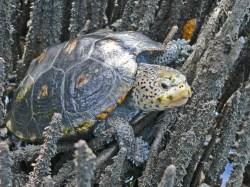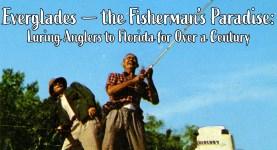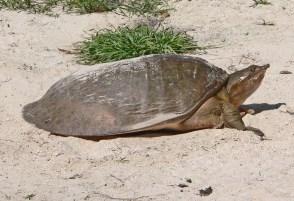
4 minute read
Charles Sobczak
H e r e’s W h a t’s H a p p e n i n g A t T h e M u s e u m o f E v e r g l a d e s
First opened in 1927 as a commercial laundry, the building that now houses Museum of the Everglades is one of the historic structures still standing as a testament to the town’s time as a oncebustling center of business and the region’s first County seat.
Advertisement
The Museum of the Everglades is open Tuesday—Saturday from 9am to 4 pm.
Exhibit Everglades-The Fisherman’s Paradise Luring Anglers to Florida for Over a Century
Now – February 27, 2022
Museum of the Everglades
This exhibit tells the story of Everglades City’s evolution from a secret fishing hole known only to locals and a few wealthy Northerners in the late 1800s to a highly desirable destination for world class sportfishing today. The guides, the gear, and the area’s influence on the industry are discussed along with Barron Collier’s discovery, branding, and promotion of the town as Fisherman’s Paradise.

Event Third Thursday Historical Talk “Guides of the Glades – How Frontier Skills & Knowledge Transformed South Florida Tourism” December 16, 2021, 2:00 pm to 3:00 pm
The history of Everglades fishing guides will be discussed along with their role in attracting visitors to the area and building the region’s economy.
Event Third Thursday Historical Talk “Collier’s Vision of Everglades City as an International Destination” Thursday, January 20, 2022
What inspired a New York City advertising mogul to build a city in the wilderness? Find out the details surrounding the early beginnings of Everglades City as a hub for business and commerce in the region.

Please make reservations online at colliermuseums.com OR by calling the museum at 239-252-5026 during museum hours, Tuesday – Saturday. 9am-4pm. Thank You!

LIVING GULF COAST BY CHARLES SOBCZAK Ornate Diamondback Terrapin (Malaclemys
terrapin macrospilota) Other names: none / Status: FL=species of special concern, IUCN-NT / Length: 5-9 in. (12-23 cm) / Weight: 0.90-1.7 lb (300-1,400 g); the male is much smaller than the female / Life span: unknown / Reproduces: lays up to 3 clutches a year with 6-7 eggs in each clutch / Found: Sarasota Co., Charlotte Co., Lee Co., Collier Co., coastal / JFMAMJJASOND (the ornate diamondback breeds year round).
In all four coastal counties of Southwest Florida the ornate diamondback terrapin spends most of its life in and around the mangroves where it forages on carrion, snails, crabs, and saltmarsh plants. Along the Eastern Seaboard and west to Texas it lives in salt marshes. The terrapin is equipped with a special gland next to its eyes that allows it to secrete excess salt. It has one of the most heavily embossed shell patterns of any turtle and a unique spotted lavender skin. It is also becoming extremely rare.
The reason for its demise is simple: it is delicious. Until recently the terrapin was hunted in much of its range for terrapin soup. It has also suffered from coastal development. Its biggest threat today is crab traps, which it enters to feed on the bait, then drowns. There are five subspecies in Florida and two more in its greater range from southern New England to Corpus Christi, Texas. Although these small reptiles can be seen in captivity, where they do well in saltwater aquariums, seeing a terrapin in the wild is nothing short of astonishing. They are shy and elusive turtles, and a terrapin sighting is a special experience for any nature enthusiast. Florida Softshell Turtle (Apalone ferox) Other names: flatback, pancake turtle, river flyer / Status: FL= stable, IUCN=LC / Length: 6-25 in. (15-63 cm) / Weight: 20-50 lb (9-22.5 kg) / Life span: to 30 years / Reproduces: lays 2-3 clutches of 12-20 eggs in burrows on land / Found: All Counties, coastal, near coast, inland / Months found: JFmamjjaSOND (lower case indicates breeding and nesting season).
A favorite food of the American alligator, the Florida softshell turtle can be found in almost every pond and lake in Southwest Florida. It is easily recognized by its unusually long snorkel-like snout and flat, olive-black carapace, which resembles stretched leather. The largest Florida softshell on record topped the scales at 93 pounds (42 kg). The average size found in this region is 25-35 pounds.
The softshell turtle is capable of pharyngeal breathing. This means it can bypass its lungs by taking in oxygen and releasing carbon dioxide through a special membrane that lines the throat, creating a direct gas exchange with the water. Think of it as a turtle gill device, giving the softshell the unique ability to remain underwater for extended periods of time. It is, in effect, part fish.
The Florida softshell turtle is primarily a carnivore, dieting on insects, crustaceans, mollusks, fish, waterfowl, and amphibians. It has also been known to eat other turtles. Softshell eggs and hatchlings are heavily preyed upon by otters, raccoons, skunks, and snapping turtles. Adults are taken by alligators and humans, who turn it into turtle soup.
On land the softshell turtle can be very aggressive and should never be handled. It is capable of delivering a nasty bite, and because of the habitat it thrives in, infection is a strong possibility.




